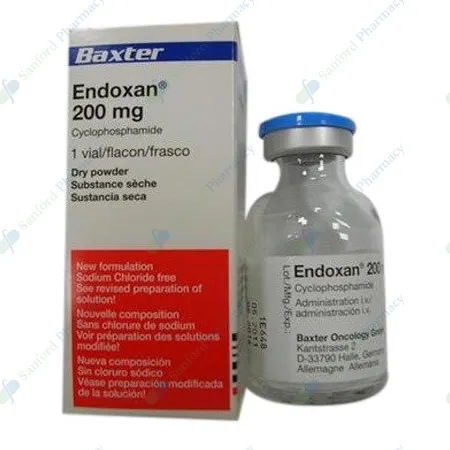Featured This Month

Diabetes Drugs
Is Gestational Diabetes Genetic?
 Kaela
Kaela
 26 Dec 2025
26 Dec 2025
Introduction This question comes up a lot in pregnancy. And it usually comes up with a little fear behind it. A woman will say, “My mom had sugar in pregnancy… is that going to happen to me too?” Or she’ll mention a sister, an aunt, someone in the family who had gestational diabetes and needed insulin. Then the worry starts turning into certainty, like it’s already written. At Sanford Pharmacy, we hear this almost every week. And I get why. Pregnancy already makes people feel like their body is doing unpredictable things. Add family history to the mix and it feels even less in your control. So yes — gestational diabetes can be genetic, and it can run in families. But it’s not as simple as inheritance. It’s more like a higher tendency. And pregnancy is the thing that brings it out. Understanding that usually takes away some of the guilt and panic. It also helps women focus on what actually matters: early screening, small daily habits, and managing it well if it happens. What gestational diabetes actually is Gestational diabetes (GDM) is when blood sugar rises during pregnancy in someone who didn’t have diabetes before. It usually shows up in the second or third trimester. Not because you suddenly ate something wrong. It’s mostly timing. Around that stage, the placenta starts producing more hormones, and those hormones make the body more resistant to insulin. Insulin is the hormone that helps sugar move out of the blood and into the cells. Pregnancy hormones make insulin work less effectively. That’s actually normal — the body does it so there’s enough glucose available for the baby. Most women compensate by making more insulin. Their pancreas just ramps up production. But for some women, the pancreas can’t keep up with the demand, and blood sugar starts rising. That’s gestational diabetes. So in a way, pregnancy itself causes the problem environment. The body just handles it differently depending on the person. What people mean when they ask “is it genetic?” When someone asks is gestational diabetes genetic, they usually mean, “Did I inherit this?” or “If it runs in my family, is it guaranteed?” It’s not guaranteed. Genetic risk is more like a higher chance. It means your body may already have a tendency toward insulin resistance, even before pregnancy. Not enough to cause diabetes in daily life, but enough that pregnancy pushes it over the line. That’s why two women can have similar diets and similar weights, and one gets GDM and the other doesn’t. It isn’t always about what someone did. Sometimes it’s about how their body is built. How genetics can increase the risk of GDM Some families carry a stronger tendency for insulin resistance. Insulin resistance basically means the body needs more insulin than usual to keep blood sugar stable. The pancreas has to work harder from the start. Then pregnancy hits. Insulin resistance increases for everyone during pregnancy, but if you already had that tendency, your pancreas may struggle to keep up. So genetics can increase GDM risk through: a stronger insulin resistance tendency a pancreas that doesn’t respond as quickly to higher demands less flexibility in blood sugar control It’s not that the genes “cause” gestational diabetes directly. It’s that they can make your baseline closer to the edge. Family history that raises GDM risk There are certain family histories that tend to raise risk more than others. If any of these apply, doctors take it seriously: A parent or sibling with type 2 diabetes A mother or sister who had gestational diabetes Strong family history of prediabetes Multiple relatives with insulin resistance, belly weight, high sugar, or metabolic syndrome This is why family history and gestational diabetes are often linked. It’s not only about pregnancy. It’s about how the body handles glucose in general, and pregnancy just exposes it. Ethnicity and genetic risk This part sometimes surprises people, but it’s well known in medical practice. Certain groups have higher rates of gestational diabetes, including: South Asian Hispanic Black Native American Pacific Islander It’s not only genes, but genetics does play a role. Lifestyle and environment matter too, but the baseline risk tends to be higher in these populations. So when doctors talk about genetic factors in gestational diabetes, ethnicity is one of the pieces they consider, even if it’s not said out loud. Genes aren’t the whole story Even if there’s no family history, gestational diabetes can still happen. Pregnancy hormones increase insulin resistance in everyone. Every pregnancy pushes the body. Some women just don’t get enough warning signs until the glucose test. That’s why you’ll see women with no diabetes in the family, healthy weight, active lifestyle, and still they develop GDM. It happens. Pregnancy is a metabolic stress test, and not everyone passes it the same way. So yes, gestational diabetes hereditary risk exists, but pregnancy itself is still the main driver. Other big risk factors besides genetics Genetics gets blamed first, but there are other major risk factors that can matter just as much. Some of the most common ones: Being overweight before pregnancy PCOS Age (risk increases after 25–30) Having gestational diabetes before Previous baby with high birth weight High blood pressure or metabolic syndrome Often these overlap with insulin resistance too. That’s the common thread. Why genetics + lifestyle often work together This is where things get misunderstood. Someone can carry a genetic tendency and never develop diabetes, because their lifestyle keeps insulin resistance low. Another person might have only mild genetic risk, but weight gain, inactivity, stress, and pregnancy hormones combine and push them into GDM. So it isn’t genes vs lifestyle. It’s usually both. Pregnancy is the trigger, genetics is the tendency, and lifestyle influences how strongly that tendency shows up. That’s why two women from the same family can have very different pregnancy experiences. Can you prevent gestational diabetes if it’s genetic? You can’t guarantee prevention. But you can lower risk, and even when GDM happens, you can make outcomes much better. Things that help: Gaining pregnancy weight in the recommended range Balanced meals (steady carbs, enough protein, enough fiber) Walking regularly, especially after meals Avoiding long gaps between meals Screening early if high-risk Prevention isn’t perfect, but it’s still worth doing. And women who take these steps often have smoother blood sugar control even if they do get diagnosed. How doctors screen for gestational diabetes Most women get screened around 24–28 weeks. Usually it starts with the 1-hour glucose challenge test. If that’s high, then they do the 3-hour glucose tolerance test. Some women get tested earlier if risk is strong. Especially if there’s a mother had gestational diabetes will i get it type situation, or a history of prediabetes. Timing matters because insulin resistance increases later in pregnancy. A test at 14 weeks might be normal and still change by 28 weeks. What happens if you get diagnosed The diagnosis sounds scary, but treatment is pretty structured and manageable. Most women start with: diet changes glucose monitoring activity like walking If needed, medication or insulin is added. Needing insulin is not failure. It just means your body needs support. Most women with gestational diabetes deliver healthy babies when blood sugar is controlled. That part is worth repeating because people forget it when they’re stressed. Does having GDM mean you’ll get diabetes later? It increases the risk, yes. After pregnancy, blood sugar often returns to normal. But women who’ve had GDM have a higher chance of developing type 2 diabetes later, especially if insulin resistance remains. That’s why postpartum screening matters. And lifestyle changes after pregnancy really do help. Even small improvements can lower long-term risk. Does gestational diabetes affect the baby? If blood sugar is uncontrolled, risks increase. Baby may grow larger than expected. There can be early blood sugar dips after birth. Delivery can be more complicated. But when blood sugar is controlled, those risks drop a lot. That’s why GDM management is less about blame and more about staying steady. Common questions people ask If my mom had it, will I definitely get it?No. Higher risk, not guaranteed. Can I have GDM even if I’m thin?Yes. Does it go away after pregnancy?Usually yes, but follow-up testing matters. Will I get it again in my next pregnancy?If you had it once, risk is higher next time. Is it my fault?No. Pregnancy hormones and insulin resistance are the real drivers. You didn’t cause this. Sanford Pharmacy tips for managing GDM risk Once someone is diagnosed, the practical side starts. Testing, numbers, routines, meals. At Sanford Pharmacy, pharmacists help with: choosing blood sugar meters, strips, lancets explaining testing times and what numbers mean guidance on safe supplements and prenatal vitamins helping build a routine so monitoring doesn’t become overwhelming checking if any medications affect blood sugar That support matters because GDM management is daily life, not one doctor appointment. Conclusion Gestational diabetes can be genetic, but it’s not inherited like a guarantee. Pregnancy hormones increase insulin resistance for everyone. Genetics can raise the chance, and lifestyle can influence whether that risk shows up strongly. Early screening and steady habits make a huge difference. And if you do get diagnosed, it’s very manageable with the right support. If you’re ever unsure about testing, food timing, or what’s “normal,” Sanford Pharmacy pharmacists are usually a calm and practical place to get answers.

Cardiovascular and Blood Disorders
Healthy Weight and Heart Health: Why They’re Always Connected
 Anastasia
Anastasia
 24 Dec 2025
24 Dec 2025
Introduction People talk about weight like it’s only about looks, or confidence, or fitting into old clothes again. But most doctors and pharmacists don’t even start there. They start with the heart. Because healthy weight and heart health are tied together in a way that’s hard to ignore. And it’s not just about someone being “obese” or not. Even small weight changes can shift blood pressure, cholesterol numbers, blood sugar, and how hard the heart has to work just to do its job. At Sanford Pharmacy, we see it all the time. Someone loses a few kilos and their blood pressure drops. Someone gains weight over the year and suddenly their cholesterol isn’t “fine” anymore. It feels unfair sometimes, but it’s real. Why weight and heart health are always connected The heart is basically a pump that’s been working since before you were born. It doesn’t get breaks. It adapts to whatever you put in front of it. When body weight goes up, the heart has to push blood through more tissue. That means a larger network of blood vessels to supply. More blood volume. More pressure. More effort every minute, even when you’re just sitting. So yes, extra weight doesn’t automatically mean heart disease, but it does create conditions where heart problems become more likely. And when people maintain a healthy weight for better circulation, the heart usually gets to work in a calmer, more stable environment. What “Healthy Weight” really means This is where things get confusing fast. A healthy weight is not the same thing as being thin. Plenty of thin people have high cholesterol or uncontrolled blood pressure, and plenty of heavier people can still have decent heart markers. So doctors don’t really chase thinness. They chase risk reduction. Healthy weight vs “thin” — clearing the confusion Healthy weight is more about where fat is stored, how active a person is, and what the trend looks like over time. BMI is one tool, but it’s not perfect. It doesn’t account for muscle, body frame, or fat distribution. That’s why doctors also look at waist circumference, because belly fat tends to be the most risky kind. It wraps around organs and affects hormones and inflammation. If you’ve ever been told “your BMI is fine but your waist is high,” that’s the reason. This is why maintaining healthy weight reduces heart disease risk isn’t about chasing a number on a scale. It’s more about keeping the body in a range where the heart isn’t constantly under extra strain. How extra weight affects the heart The heart has to pump harder to supply a larger body. That sounds simple, and it kind of is, but the effect is big. With more weight, the heart often has to: pump more blood per minute work against higher resistance in blood vessels keep up with higher oxygen demand Over time, this increased workload leads to higher strain on the heart muscle. Sometimes the heart adapts by thickening or enlarging slightly. That may not cause symptoms early, but it can increase the risk of heart failure later on. This is one of the major reasons doctors talk about obesity effects on heart and blood vessels so often. Weight and blood pressure Excess body fat increases blood pressure through a few different paths. It can raise the amount of blood circulating in the body, increase resistance in the blood vessels, and affect kidney function. It also affects hormones that control how tight or relaxed arteries stay. The tough part is that high blood pressure often feels like nothing. People don’t feel sick. They don’t feel pain. It’s just quietly damaging arteries, stressing the heart, and raising stroke risk in the background. This is why weight management for cardiovascular health is one of the first lifestyle goals doctors mention. Even modest weight loss can lower blood pressure faster than people expect. Sometimes a few kilos makes the reading drop enough that medication doses can be adjusted later (not always, but it happens). Weight’s role in cholesterol and plaque buildup Extra weight often raises LDL cholesterol and triglycerides. At the same time, HDL — the “good cholesterol” — tends to drop. It’s an annoying combination. This mix increases the chance of plaque building up in arteries. Plaque can narrow blood vessels gradually, and if it becomes unstable, it can rupture and cause a heart attack or stroke. That’s where the phrase excess weight and cardiovascular disease risk really starts making sense. It’s not weight itself acting like poison. It’s what weight does to cholesterol, blood pressure, blood sugar, and inflammation over time. Healthy weight and blood sugar control One of the most powerful links here is weight and insulin resistance. As weight increases, especially around the abdomen, the body becomes less responsive to insulin. That means sugar stays higher in the blood and the pancreas has to work harder. Over time, this becomes type 2 diabetes. Diabetes is one of the strongest risk factors for heart attack and stroke. It damages blood vessels, affects nerves, and accelerates plaque buildup. The good news is weight loss can improve insulin sensitivity. Even a small reduction helps the body handle blood sugar better, which lowers long-term cardiovascular risk. This is a big part of why healthy weight lowers blood pressure and cholesterol too — because everything is linked. Inflammation: the hidden cardiovascular risk This is the part most people don’t expect. Fat tissue isn’t just “stored energy.” It’s active tissue. It releases chemicals that can drive chronic inflammation. Not the kind of inflammation you feel like swelling or fever, but a low-grade, constant irritation inside the body. That inflammation makes blood vessels less flexible. It can damage the lining of arteries. And it can make plaque more unstable, which increases the risk of sudden heart events. So when people ask why healthy weight matters for cardiovascular system, inflammation is a big part of the answer. It’s one of the invisible risks that improves when weight comes down. How weight impacts circulation and blood clot risk Extra weight can slow circulation, especially in the legs. Blood flow becomes less efficient, and clotting risk rises. That’s why obesity is linked with deep vein thrombosis (DVT) and pulmonary embolism. Clots can form in the deep veins of the legs, then travel to the lungs. It’s serious, and sometimes it happens without much warning. Obesity also increases stroke risk, partly because of blood pressure and plaque, and partly because of clotting tendency. Keeping a healthy weight for better circulation helps reduce all of these risks. Weight and heart rhythm problems Excess weight increases the risk of atrial fibrillation (AFib). AFib is when the upper chambers of the heart beat irregularly, which can allow blood to pool and form clots. Those clots can travel to the brain and cause stroke. The interesting part is that weight loss often improves AFib stability. Some people notice fewer episodes or better rhythm control after losing weight and improving fitness. So yes, benefits of weight loss for heart health includes rhythm issues too, not just blood pressure. Sleep, weight, and cardiovascular health Weight gain and sleep apnea often go together. Sleep apnea causes breathing pauses during sleep, which forces the body into repeated stress responses. Blood pressure rises. Heart rate changes. The heart works harder at night instead of resting. Treating sleep apnea can improve blood pressure and energy, which makes weight control easier. It goes in both directions. If someone is struggling with weight and heart markers, sleep is often the missing piece nobody is checking. Benefits of losing even a small amount of weight A lot of people think they need dramatic weight loss to see benefits. They don’t. A 5–10% reduction in body weight can improve: blood pressure cholesterol and triglycerides blood sugar control inflammation markers stamina and energy In some cases, people need fewer medications or lower doses. Not always, and nobody should change meds without their doctor, but it does happen. This is one reason maintaining healthy weight reduces heart disease risk is so emphasized. It doesn’t take perfection. It takes steady, realistic progress. How healthy weight supports long-term heart health When weight stays in a healthier range over time, the heart has less strain to deal with. That usually means: lower risk of heart failure reduced risk of coronary artery disease better exercise tolerance better day-to-day stamina improved quality of life And honestly, even the small things matter, like walking up stairs without feeling breathless, or being able to stay active without joint pain holding you back. Simple and realistic weight management tips for heart care Extreme dieting doesn’t work for most people. It makes people miserable, hungry, and burned out. The heart doesn’t need that. It needs consistency. A few realistic approaches that support weight management for cardiovascular health: Focus on balanced meals, not skipping meals Add more fiber and protein so you feel full longer Cut down sugary drinks first (this alone makes a difference) Walk daily, even if it’s short and slow Do light strength work if possible — muscle helps metabolism Manage stress, because stress eating is real Sleep properly, because tired bodies crave sugar Building habits slowly is better than going aggressive for two weeks and giving up. The heart benefits more from steady change than dramatic attempts. When to seek medical support Sometimes weight gain isn’t only about diet. It can be linked to thyroid problems, hormone changes, medications (like antidepressants, steroids, or insulin), or fluid retention from heart or kidney issues. If someone has heart disease already, weight loss should be guided safely. Crash diets, unregulated supplements, and extreme fasting can stress the heart, so medical guidance matters. A pharmacist can also help check if medications are contributing to weight changes and talk through safe options. Frequently asked questions Can you be overweight and still have a healthy heart? Yes, you can. Especially if blood pressure, cholesterol, blood sugar, and fitness are good. But the risk tends to rise over time, so it’s still worth watching. Is belly fat worse than overall weight? In most cases, yes. Belly fat is more metabolically active and linked with inflammation and insulin resistance. How fast should weight loss happen for heart safety? Slow and steady is safer. About 0.5–1 kg per week is usually considered reasonable, depending on the person. Does weight loss replace heart medications? Not automatically. Sometimes it reduces the need later, but many people still need medication. Lifestyle and medicine often work together, not as replacements. Conclusion Healthy weight and heart health go hand in hand because extra weight affects nearly every major heart risk factor — blood pressure, cholesterol, blood sugar, inflammation, circulation, and even heart rhythm. And the good part is, even small changes can create big cardiovascular benefits. You don’t need perfection. You need something you can keep doing. If you ever feel stuck or unsure, Sanford Pharmacy pharmacists can help with realistic guidance, medication support, and practical steps that make heart care feel less overwhelming.

Viral and Parasitic
Is HIV an Autoimmune Disease?
 Korbin
Korbin
 23 Dec 2025
23 Dec 2025
Starting with the confusion — why people ask this question A lot of people hear that HIV attacks the immune system and immediately assume it must be an autoimmune disease. It sounds logical on the surface. Immune system involved, long-term condition, serious consequences. Online searches don’t help much either — information gets mixed, terms get blurred. At Sanford Pharmacy, this question comes up pretty often, especially from people who are newly diagnosed or from family members trying to understand what’s really happening in the body. The short answer is no, HIV is not an autoimmune disease. But stopping there doesn’t really help. The why matters. First, what an autoimmune disease actually is Autoimmune diseases happen when the immune system gets confused. Instead of protecting the body, it starts attacking healthy cells, tissues, or organs. There’s no outside infection driving this. The immune system is misfiring on its own. Conditions people usually recognize fall into this group. Lupus. Rheumatoid arthritis. Multiple sclerosis. Different organs, different symptoms, but the same core problem underneath. The key idea is simple: in an autoimmune disease, the immune system is attacking the body itself. What HIV actually is HIV is not the immune system attacking anything. It’s the opposite. HIV is a viral infection, caused by the human immunodeficiency virus. An outside virus enters the body and targets the immune system directly. So instead of the immune system making a mistake, it’s being attacked. This difference sounds subtle, but it’s huge. It’s the main reason HIV is not classified as an autoimmune condition and never has been. How HIV affects the immune system HIV goes after very specific immune cells called CD4 cells, sometimes called T-helper cells. These cells act like coordinators. They don’t fight infections alone — they tell the rest of the immune system what to do. As HIV replicates, it slowly damages and reduces the number of CD4 cells. With fewer coordinators around, immune responses become weaker and less organized. At Sanford Pharmacy, this is often explained as the immune system losing its leadership. The army is still there, but no one is giving clear instructions. Why HIV is NOT classified as an autoimmune disease This is where the classification really matters. In HIV: The immune system is not attacking healthy tissue There is no mistaken immune response The damage comes from a virus infecting immune cells Autoimmune diseases are internal errors. HIV is an external infection. That’s why HIV falls under infectious diseases and immunodeficiency disorders, not autoimmune disease categories. Even when the immune system is badly damaged, the cause is still the virus. Why the confusion still makes sense Even though HIV vs autoimmune disease are medically very different, the confusion isn’t unreasonable. Both involve immune system problems.Both can be chronic.Both often require long-term medication.Both can affect many parts of the body. From the outside, they can look similar. Under the hood, the mechanisms are completely different. Can HIV cause autoimmune-like problems? Yes, and this is where things get messy. People living with HIV can develop autoimmune conditions. HIV immune dysregulation can sometimes trigger abnormal immune responses. In some cases, autoimmune diseases become more noticeable after HIV treatment starts and the immune system wakes back up. Sanford Pharmacy pharmacists usually describe this as a secondary effect. HIV itself is not autoimmune, but immune imbalance can open the door to autoimmune issues in certain people. That doesn’t change how HIV is classified, but it does explain some of the overlap people read about. What happens when HIV is untreated Without treatment, HIV keeps replicating. CD4 counts continue to drop. The immune system becomes less capable of fighting even common infections. Eventually, opportunistic infections appear. This stage is called AIDS. AIDS is still not an autoimmune condition. It’s advanced immunodeficiency. The immune system isn’t overactive — it’s exhausted and depleted. How HIV treatment changes the picture Modern HIV treatment changes everything. Antiretroviral therapy, or ART, stops HIV from replicating. CD4 counts stabilize or recover. The immune system regains structure and strength. At Sanford Pharmacy, one of the most important points pharmacists stress is this: HIV treatment protects the immune system. It doesn’t suppress it. That’s a major difference compared to how autoimmune diseases are treated. Autoimmune disease vs HIV — a simple comparison Autoimmune disease: immune system attacks the bodyHIV: virus attacks immune cells Autoimmune disease: immune system is overactiveHIV: immune system becomes weak Autoimmune disease: treated with immune suppressionHIV: treated with antiviral therapy Seeing it side by side usually clears things up quickly. Common questions people ask Can someone have HIV and an autoimmune disease at the same time? Yes.Does HIV make autoimmune diseases worse? Sometimes.Is AIDS an autoimmune condition? No.Why do HIV symptoms change so much over time? Immune strength changes. These questions come up a lot, and none of them are silly. The immune system is complicated, even without a virus involved. Why understanding this difference matters Knowing whether HIV is an autoimmune disease isn’t just a technical detail. It affects how HIV is treated.It influences medication choices.It helps reduce fear and stigma.It helps people understand what their body is actually dealing with. At Sanford Pharmacy, education is a big part of care. When people understand how HIV affects the immune system, they’re more confident with treatment and more consistent with medications. Closing takeaway HIV is not an autoimmune disease. It’s a viral infection that weakens the immune system by attacking key immune cells. While HIV can cause immune imbalance and even trigger autoimmune-like problems in some cases, the root cause is completely different. For questions about immune health, HIV medications, or long-term management, Sanford Pharmacy pharmacists are often a steady, practical source of clear guidance.

Is Gestational Diabetes Genetic?
 Kaela
|
Kaela
|
 26 Dec 2025
26 Dec 2025

Healthy Weight and Heart Health: Why They’re Always Connected
 Anastasia
|
Anastasia
|
 24 Dec 2025
24 Dec 2025

Is HIV an Autoimmune Disease?
 Korbin
|
Korbin
|
 23 Dec 2025
23 Dec 2025

How Entecavir Works?
 Herbert
|
Herbert
|
 18 Dec 2025
18 Dec 2025

How Nitazoxanide Works?
 Jalon
|
Jalon
|
 18 Dec 2025
18 Dec 2025
Recently Posted

Diabetes Drugs
Is Gestational Diabetes Genetic?
 Kaela
Kaela
 26 Dec 2025
26 Dec 2025
Introduction This question comes up a lot in pregnancy. And it usually comes up with a little fear behind it. A woman will say, “My mom had sugar in pregnancy… is that going to happen to me too?” Or she’ll mention a sister, an aunt, someone in the family who had gestational diabetes and needed insulin. Then the worry starts turning into certainty, like it’s already written. At Sanford Pharmacy, we hear this almost every week. And I get why. Pregnancy already makes people feel like their body is doing unpredictable things. Add family history to the mix and it feels even less in your control. So yes — gestational diabetes can be genetic, and it can run in families. But it’s not as simple as inheritance. It’s more like a higher tendency. And pregnancy is the thing that brings it out. Understanding that usually takes away some of the guilt and panic. It also helps women focus on what actually matters: early screening, small daily habits, and managing it well if it happens. What gestational diabetes actually is Gestational diabetes (GDM) is when blood sugar rises during pregnancy in someone who didn’t have diabetes before. It usually shows up in the second or third trimester. Not because you suddenly ate something wrong. It’s mostly timing. Around that stage, the placenta starts producing more hormones, and those hormones make the body more resistant to insulin. Insulin is the hormone that helps sugar move out of the blood and into the cells. Pregnancy hormones make insulin work less effectively. That’s actually normal — the body does it so there’s enough glucose available for the baby. Most women compensate by making more insulin. Their pancreas just ramps up production. But for some women, the pancreas can’t keep up with the demand, and blood sugar starts rising. That’s gestational diabetes. So in a way, pregnancy itself causes the problem environment. The body just handles it differently depending on the person. What people mean when they ask “is it genetic?” When someone asks is gestational diabetes genetic, they usually mean, “Did I inherit this?” or “If it runs in my family, is it guaranteed?” It’s not guaranteed. Genetic risk is more like a higher chance. It means your body may already have a tendency toward insulin resistance, even before pregnancy. Not enough to cause diabetes in daily life, but enough that pregnancy pushes it over the line. That’s why two women can have similar diets and similar weights, and one gets GDM and the other doesn’t. It isn’t always about what someone did. Sometimes it’s about how their body is built. How genetics can increase the risk of GDM Some families carry a stronger tendency for insulin resistance. Insulin resistance basically means the body needs more insulin than usual to keep blood sugar stable. The pancreas has to work harder from the start. Then pregnancy hits. Insulin resistance increases for everyone during pregnancy, but if you already had that tendency, your pancreas may struggle to keep up. So genetics can increase GDM risk through: a stronger insulin resistance tendency a pancreas that doesn’t respond as quickly to higher demands less flexibility in blood sugar control It’s not that the genes “cause” gestational diabetes directly. It’s that they can make your baseline closer to the edge. Family history that raises GDM risk There are certain family histories that tend to raise risk more than others. If any of these apply, doctors take it seriously: A parent or sibling with type 2 diabetes A mother or sister who had gestational diabetes Strong family history of prediabetes Multiple relatives with insulin resistance, belly weight, high sugar, or metabolic syndrome This is why family history and gestational diabetes are often linked. It’s not only about pregnancy. It’s about how the body handles glucose in general, and pregnancy just exposes it. Ethnicity and genetic risk This part sometimes surprises people, but it’s well known in medical practice. Certain groups have higher rates of gestational diabetes, including: South Asian Hispanic Black Native American Pacific Islander It’s not only genes, but genetics does play a role. Lifestyle and environment matter too, but the baseline risk tends to be higher in these populations. So when doctors talk about genetic factors in gestational diabetes, ethnicity is one of the pieces they consider, even if it’s not said out loud. Genes aren’t the whole story Even if there’s no family history, gestational diabetes can still happen. Pregnancy hormones increase insulin resistance in everyone. Every pregnancy pushes the body. Some women just don’t get enough warning signs until the glucose test. That’s why you’ll see women with no diabetes in the family, healthy weight, active lifestyle, and still they develop GDM. It happens. Pregnancy is a metabolic stress test, and not everyone passes it the same way. So yes, gestational diabetes hereditary risk exists, but pregnancy itself is still the main driver. Other big risk factors besides genetics Genetics gets blamed first, but there are other major risk factors that can matter just as much. Some of the most common ones: Being overweight before pregnancy PCOS Age (risk increases after 25–30) Having gestational diabetes before Previous baby with high birth weight High blood pressure or metabolic syndrome Often these overlap with insulin resistance too. That’s the common thread. Why genetics + lifestyle often work together This is where things get misunderstood. Someone can carry a genetic tendency and never develop diabetes, because their lifestyle keeps insulin resistance low. Another person might have only mild genetic risk, but weight gain, inactivity, stress, and pregnancy hormones combine and push them into GDM. So it isn’t genes vs lifestyle. It’s usually both. Pregnancy is the trigger, genetics is the tendency, and lifestyle influences how strongly that tendency shows up. That’s why two women from the same family can have very different pregnancy experiences. Can you prevent gestational diabetes if it’s genetic? You can’t guarantee prevention. But you can lower risk, and even when GDM happens, you can make outcomes much better. Things that help: Gaining pregnancy weight in the recommended range Balanced meals (steady carbs, enough protein, enough fiber) Walking regularly, especially after meals Avoiding long gaps between meals Screening early if high-risk Prevention isn’t perfect, but it’s still worth doing. And women who take these steps often have smoother blood sugar control even if they do get diagnosed. How doctors screen for gestational diabetes Most women get screened around 24–28 weeks. Usually it starts with the 1-hour glucose challenge test. If that’s high, then they do the 3-hour glucose tolerance test. Some women get tested earlier if risk is strong. Especially if there’s a mother had gestational diabetes will i get it type situation, or a history of prediabetes. Timing matters because insulin resistance increases later in pregnancy. A test at 14 weeks might be normal and still change by 28 weeks. What happens if you get diagnosed The diagnosis sounds scary, but treatment is pretty structured and manageable. Most women start with: diet changes glucose monitoring activity like walking If needed, medication or insulin is added. Needing insulin is not failure. It just means your body needs support. Most women with gestational diabetes deliver healthy babies when blood sugar is controlled. That part is worth repeating because people forget it when they’re stressed. Does having GDM mean you’ll get diabetes later? It increases the risk, yes. After pregnancy, blood sugar often returns to normal. But women who’ve had GDM have a higher chance of developing type 2 diabetes later, especially if insulin resistance remains. That’s why postpartum screening matters. And lifestyle changes after pregnancy really do help. Even small improvements can lower long-term risk. Does gestational diabetes affect the baby? If blood sugar is uncontrolled, risks increase. Baby may grow larger than expected. There can be early blood sugar dips after birth. Delivery can be more complicated. But when blood sugar is controlled, those risks drop a lot. That’s why GDM management is less about blame and more about staying steady. Common questions people ask If my mom had it, will I definitely get it?No. Higher risk, not guaranteed. Can I have GDM even if I’m thin?Yes. Does it go away after pregnancy?Usually yes, but follow-up testing matters. Will I get it again in my next pregnancy?If you had it once, risk is higher next time. Is it my fault?No. Pregnancy hormones and insulin resistance are the real drivers. You didn’t cause this. Sanford Pharmacy tips for managing GDM risk Once someone is diagnosed, the practical side starts. Testing, numbers, routines, meals. At Sanford Pharmacy, pharmacists help with: choosing blood sugar meters, strips, lancets explaining testing times and what numbers mean guidance on safe supplements and prenatal vitamins helping build a routine so monitoring doesn’t become overwhelming checking if any medications affect blood sugar That support matters because GDM management is daily life, not one doctor appointment. Conclusion Gestational diabetes can be genetic, but it’s not inherited like a guarantee. Pregnancy hormones increase insulin resistance for everyone. Genetics can raise the chance, and lifestyle can influence whether that risk shows up strongly. Early screening and steady habits make a huge difference. And if you do get diagnosed, it’s very manageable with the right support. If you’re ever unsure about testing, food timing, or what’s “normal,” Sanford Pharmacy pharmacists are usually a calm and practical place to get answers.

Cardiovascular and Blood Disorders
Healthy Weight and Heart Health: Why They’re Always Connected
 Anastasia
Anastasia
 24 Dec 2025
24 Dec 2025
Introduction People talk about weight like it’s only about looks, or confidence, or fitting into old clothes again. But most doctors and pharmacists don’t even start there. They start with the heart. Because healthy weight and heart health are tied together in a way that’s hard to ignore. And it’s not just about someone being “obese” or not. Even small weight changes can shift blood pressure, cholesterol numbers, blood sugar, and how hard the heart has to work just to do its job. At Sanford Pharmacy, we see it all the time. Someone loses a few kilos and their blood pressure drops. Someone gains weight over the year and suddenly their cholesterol isn’t “fine” anymore. It feels unfair sometimes, but it’s real. Why weight and heart health are always connected The heart is basically a pump that’s been working since before you were born. It doesn’t get breaks. It adapts to whatever you put in front of it. When body weight goes up, the heart has to push blood through more tissue. That means a larger network of blood vessels to supply. More blood volume. More pressure. More effort every minute, even when you’re just sitting. So yes, extra weight doesn’t automatically mean heart disease, but it does create conditions where heart problems become more likely. And when people maintain a healthy weight for better circulation, the heart usually gets to work in a calmer, more stable environment. What “Healthy Weight” really means This is where things get confusing fast. A healthy weight is not the same thing as being thin. Plenty of thin people have high cholesterol or uncontrolled blood pressure, and plenty of heavier people can still have decent heart markers. So doctors don’t really chase thinness. They chase risk reduction. Healthy weight vs “thin” — clearing the confusion Healthy weight is more about where fat is stored, how active a person is, and what the trend looks like over time. BMI is one tool, but it’s not perfect. It doesn’t account for muscle, body frame, or fat distribution. That’s why doctors also look at waist circumference, because belly fat tends to be the most risky kind. It wraps around organs and affects hormones and inflammation. If you’ve ever been told “your BMI is fine but your waist is high,” that’s the reason. This is why maintaining healthy weight reduces heart disease risk isn’t about chasing a number on a scale. It’s more about keeping the body in a range where the heart isn’t constantly under extra strain. How extra weight affects the heart The heart has to pump harder to supply a larger body. That sounds simple, and it kind of is, but the effect is big. With more weight, the heart often has to: pump more blood per minute work against higher resistance in blood vessels keep up with higher oxygen demand Over time, this increased workload leads to higher strain on the heart muscle. Sometimes the heart adapts by thickening or enlarging slightly. That may not cause symptoms early, but it can increase the risk of heart failure later on. This is one of the major reasons doctors talk about obesity effects on heart and blood vessels so often. Weight and blood pressure Excess body fat increases blood pressure through a few different paths. It can raise the amount of blood circulating in the body, increase resistance in the blood vessels, and affect kidney function. It also affects hormones that control how tight or relaxed arteries stay. The tough part is that high blood pressure often feels like nothing. People don’t feel sick. They don’t feel pain. It’s just quietly damaging arteries, stressing the heart, and raising stroke risk in the background. This is why weight management for cardiovascular health is one of the first lifestyle goals doctors mention. Even modest weight loss can lower blood pressure faster than people expect. Sometimes a few kilos makes the reading drop enough that medication doses can be adjusted later (not always, but it happens). Weight’s role in cholesterol and plaque buildup Extra weight often raises LDL cholesterol and triglycerides. At the same time, HDL — the “good cholesterol” — tends to drop. It’s an annoying combination. This mix increases the chance of plaque building up in arteries. Plaque can narrow blood vessels gradually, and if it becomes unstable, it can rupture and cause a heart attack or stroke. That’s where the phrase excess weight and cardiovascular disease risk really starts making sense. It’s not weight itself acting like poison. It’s what weight does to cholesterol, blood pressure, blood sugar, and inflammation over time. Healthy weight and blood sugar control One of the most powerful links here is weight and insulin resistance. As weight increases, especially around the abdomen, the body becomes less responsive to insulin. That means sugar stays higher in the blood and the pancreas has to work harder. Over time, this becomes type 2 diabetes. Diabetes is one of the strongest risk factors for heart attack and stroke. It damages blood vessels, affects nerves, and accelerates plaque buildup. The good news is weight loss can improve insulin sensitivity. Even a small reduction helps the body handle blood sugar better, which lowers long-term cardiovascular risk. This is a big part of why healthy weight lowers blood pressure and cholesterol too — because everything is linked. Inflammation: the hidden cardiovascular risk This is the part most people don’t expect. Fat tissue isn’t just “stored energy.” It’s active tissue. It releases chemicals that can drive chronic inflammation. Not the kind of inflammation you feel like swelling or fever, but a low-grade, constant irritation inside the body. That inflammation makes blood vessels less flexible. It can damage the lining of arteries. And it can make plaque more unstable, which increases the risk of sudden heart events. So when people ask why healthy weight matters for cardiovascular system, inflammation is a big part of the answer. It’s one of the invisible risks that improves when weight comes down. How weight impacts circulation and blood clot risk Extra weight can slow circulation, especially in the legs. Blood flow becomes less efficient, and clotting risk rises. That’s why obesity is linked with deep vein thrombosis (DVT) and pulmonary embolism. Clots can form in the deep veins of the legs, then travel to the lungs. It’s serious, and sometimes it happens without much warning. Obesity also increases stroke risk, partly because of blood pressure and plaque, and partly because of clotting tendency. Keeping a healthy weight for better circulation helps reduce all of these risks. Weight and heart rhythm problems Excess weight increases the risk of atrial fibrillation (AFib). AFib is when the upper chambers of the heart beat irregularly, which can allow blood to pool and form clots. Those clots can travel to the brain and cause stroke. The interesting part is that weight loss often improves AFib stability. Some people notice fewer episodes or better rhythm control after losing weight and improving fitness. So yes, benefits of weight loss for heart health includes rhythm issues too, not just blood pressure. Sleep, weight, and cardiovascular health Weight gain and sleep apnea often go together. Sleep apnea causes breathing pauses during sleep, which forces the body into repeated stress responses. Blood pressure rises. Heart rate changes. The heart works harder at night instead of resting. Treating sleep apnea can improve blood pressure and energy, which makes weight control easier. It goes in both directions. If someone is struggling with weight and heart markers, sleep is often the missing piece nobody is checking. Benefits of losing even a small amount of weight A lot of people think they need dramatic weight loss to see benefits. They don’t. A 5–10% reduction in body weight can improve: blood pressure cholesterol and triglycerides blood sugar control inflammation markers stamina and energy In some cases, people need fewer medications or lower doses. Not always, and nobody should change meds without their doctor, but it does happen. This is one reason maintaining healthy weight reduces heart disease risk is so emphasized. It doesn’t take perfection. It takes steady, realistic progress. How healthy weight supports long-term heart health When weight stays in a healthier range over time, the heart has less strain to deal with. That usually means: lower risk of heart failure reduced risk of coronary artery disease better exercise tolerance better day-to-day stamina improved quality of life And honestly, even the small things matter, like walking up stairs without feeling breathless, or being able to stay active without joint pain holding you back. Simple and realistic weight management tips for heart care Extreme dieting doesn’t work for most people. It makes people miserable, hungry, and burned out. The heart doesn’t need that. It needs consistency. A few realistic approaches that support weight management for cardiovascular health: Focus on balanced meals, not skipping meals Add more fiber and protein so you feel full longer Cut down sugary drinks first (this alone makes a difference) Walk daily, even if it’s short and slow Do light strength work if possible — muscle helps metabolism Manage stress, because stress eating is real Sleep properly, because tired bodies crave sugar Building habits slowly is better than going aggressive for two weeks and giving up. The heart benefits more from steady change than dramatic attempts. When to seek medical support Sometimes weight gain isn’t only about diet. It can be linked to thyroid problems, hormone changes, medications (like antidepressants, steroids, or insulin), or fluid retention from heart or kidney issues. If someone has heart disease already, weight loss should be guided safely. Crash diets, unregulated supplements, and extreme fasting can stress the heart, so medical guidance matters. A pharmacist can also help check if medications are contributing to weight changes and talk through safe options. Frequently asked questions Can you be overweight and still have a healthy heart? Yes, you can. Especially if blood pressure, cholesterol, blood sugar, and fitness are good. But the risk tends to rise over time, so it’s still worth watching. Is belly fat worse than overall weight? In most cases, yes. Belly fat is more metabolically active and linked with inflammation and insulin resistance. How fast should weight loss happen for heart safety? Slow and steady is safer. About 0.5–1 kg per week is usually considered reasonable, depending on the person. Does weight loss replace heart medications? Not automatically. Sometimes it reduces the need later, but many people still need medication. Lifestyle and medicine often work together, not as replacements. Conclusion Healthy weight and heart health go hand in hand because extra weight affects nearly every major heart risk factor — blood pressure, cholesterol, blood sugar, inflammation, circulation, and even heart rhythm. And the good part is, even small changes can create big cardiovascular benefits. You don’t need perfection. You need something you can keep doing. If you ever feel stuck or unsure, Sanford Pharmacy pharmacists can help with realistic guidance, medication support, and practical steps that make heart care feel less overwhelming.

Viral and Parasitic
Is HIV an Autoimmune Disease?
 Korbin
Korbin
 23 Dec 2025
23 Dec 2025
Starting with the confusion — why people ask this question A lot of people hear that HIV attacks the immune system and immediately assume it must be an autoimmune disease. It sounds logical on the surface. Immune system involved, long-term condition, serious consequences. Online searches don’t help much either — information gets mixed, terms get blurred. At Sanford Pharmacy, this question comes up pretty often, especially from people who are newly diagnosed or from family members trying to understand what’s really happening in the body. The short answer is no, HIV is not an autoimmune disease. But stopping there doesn’t really help. The why matters. First, what an autoimmune disease actually is Autoimmune diseases happen when the immune system gets confused. Instead of protecting the body, it starts attacking healthy cells, tissues, or organs. There’s no outside infection driving this. The immune system is misfiring on its own. Conditions people usually recognize fall into this group. Lupus. Rheumatoid arthritis. Multiple sclerosis. Different organs, different symptoms, but the same core problem underneath. The key idea is simple: in an autoimmune disease, the immune system is attacking the body itself. What HIV actually is HIV is not the immune system attacking anything. It’s the opposite. HIV is a viral infection, caused by the human immunodeficiency virus. An outside virus enters the body and targets the immune system directly. So instead of the immune system making a mistake, it’s being attacked. This difference sounds subtle, but it’s huge. It’s the main reason HIV is not classified as an autoimmune condition and never has been. How HIV affects the immune system HIV goes after very specific immune cells called CD4 cells, sometimes called T-helper cells. These cells act like coordinators. They don’t fight infections alone — they tell the rest of the immune system what to do. As HIV replicates, it slowly damages and reduces the number of CD4 cells. With fewer coordinators around, immune responses become weaker and less organized. At Sanford Pharmacy, this is often explained as the immune system losing its leadership. The army is still there, but no one is giving clear instructions. Why HIV is NOT classified as an autoimmune disease This is where the classification really matters. In HIV: The immune system is not attacking healthy tissue There is no mistaken immune response The damage comes from a virus infecting immune cells Autoimmune diseases are internal errors. HIV is an external infection. That’s why HIV falls under infectious diseases and immunodeficiency disorders, not autoimmune disease categories. Even when the immune system is badly damaged, the cause is still the virus. Why the confusion still makes sense Even though HIV vs autoimmune disease are medically very different, the confusion isn’t unreasonable. Both involve immune system problems.Both can be chronic.Both often require long-term medication.Both can affect many parts of the body. From the outside, they can look similar. Under the hood, the mechanisms are completely different. Can HIV cause autoimmune-like problems? Yes, and this is where things get messy. People living with HIV can develop autoimmune conditions. HIV immune dysregulation can sometimes trigger abnormal immune responses. In some cases, autoimmune diseases become more noticeable after HIV treatment starts and the immune system wakes back up. Sanford Pharmacy pharmacists usually describe this as a secondary effect. HIV itself is not autoimmune, but immune imbalance can open the door to autoimmune issues in certain people. That doesn’t change how HIV is classified, but it does explain some of the overlap people read about. What happens when HIV is untreated Without treatment, HIV keeps replicating. CD4 counts continue to drop. The immune system becomes less capable of fighting even common infections. Eventually, opportunistic infections appear. This stage is called AIDS. AIDS is still not an autoimmune condition. It’s advanced immunodeficiency. The immune system isn’t overactive — it’s exhausted and depleted. How HIV treatment changes the picture Modern HIV treatment changes everything. Antiretroviral therapy, or ART, stops HIV from replicating. CD4 counts stabilize or recover. The immune system regains structure and strength. At Sanford Pharmacy, one of the most important points pharmacists stress is this: HIV treatment protects the immune system. It doesn’t suppress it. That’s a major difference compared to how autoimmune diseases are treated. Autoimmune disease vs HIV — a simple comparison Autoimmune disease: immune system attacks the bodyHIV: virus attacks immune cells Autoimmune disease: immune system is overactiveHIV: immune system becomes weak Autoimmune disease: treated with immune suppressionHIV: treated with antiviral therapy Seeing it side by side usually clears things up quickly. Common questions people ask Can someone have HIV and an autoimmune disease at the same time? Yes.Does HIV make autoimmune diseases worse? Sometimes.Is AIDS an autoimmune condition? No.Why do HIV symptoms change so much over time? Immune strength changes. These questions come up a lot, and none of them are silly. The immune system is complicated, even without a virus involved. Why understanding this difference matters Knowing whether HIV is an autoimmune disease isn’t just a technical detail. It affects how HIV is treated.It influences medication choices.It helps reduce fear and stigma.It helps people understand what their body is actually dealing with. At Sanford Pharmacy, education is a big part of care. When people understand how HIV affects the immune system, they’re more confident with treatment and more consistent with medications. Closing takeaway HIV is not an autoimmune disease. It’s a viral infection that weakens the immune system by attacking key immune cells. While HIV can cause immune imbalance and even trigger autoimmune-like problems in some cases, the root cause is completely different. For questions about immune health, HIV medications, or long-term management, Sanford Pharmacy pharmacists are often a steady, practical source of clear guidance.

Viral and Parasitic
How Entecavir Works?
 Herbert
Herbert
 18 Dec 2025
18 Dec 2025
Why do people even ask about Entecavir Most people don’t start entecavir casually. It usually comes after blood tests, scans, a few serious conversations. Chronic hepatitis B has a way of making things feel long-term right from the start. So when someone finally holds the prescription, the questions come fast. At Sanford Pharmacy, people often ask if this medicine actually kills the virus or if it’s something they’ll be tied to for years. That question matters, because the answer changes how people look at the treatment. Once you understand how entecavir works, the plan starts to feel more manageable and less intimidating. What entecavir is really meant to do Entecavir is an antiviral. Not an antibiotic. That distinction trips people up more than anything else. Antibiotics usually aim to clear an infection completely. Hepatitis B doesn’t work like that. The virus lives deep inside liver cells, using them to copy itself again and again. Entecavir isn’t designed to wipe HBV out of the body. Its role is control. Think of it as keeping the virus quiet enough that the liver can breathe. When the virus is suppressed, liver damage slows, inflammation eases, and long-term complications become less likely. That’s the real purpose behind entecavir uses. How entecavir works at the core level Hepatitis B survives by replication. It makes copies of its DNA inside liver cells, and those copies fuel ongoing inflammation. Entecavir interferes with that copying process. The virus depends on an enzyme called HBV DNA polymerase to reproduce. Entecavir blocks that enzyme. When the enzyme doesn’t work properly, the virus can’t make new DNA the way it needs to. At Sanford Pharmacy, this is often described in simple terms. The virus is still present, but it’s put on pause. It’s no longer multiplying at full speed. Breaking it down without the science lecture Once entecavir gets in the system, a few things start to shift. The virus tries to replicate, but the process fails.Viral levels in the blood begin to drop.The liver isn’t under constant attack anymore. The virus doesn’t disappear. It just becomes much quieter. That’s why blood work slowly improves instead of changing overnight. This slower pace is normal, and it’s actually what protects the liver in the long run. Why entecavir doesn’t cure hepatitis B This part can be frustrating, and it’s important to be honest about it. Hepatitis B leaves behind a hidden template inside liver cells. Current medications can’t fully remove that template. Because of that, even strong antivirals like entecavir can’t completely eliminate the virus. So entecavir isn’t a cure. It’s long-term control. That’s why stopping it suddenly can be risky. Sanford Pharmacy pharmacists spend a lot of time explaining this, because stopping on your own can trigger a viral flare that stresses the liver hard. What starts changing once the virus slows down As viral replication drops, the liver starts responding. Liver enzymes like ALT often come down.Inflammation eases.The pace of scarring slows.Long-term risks like cirrhosis and liver cancer decrease. None of this happens in a straight line. Some lab values move faster than others. Some weeks look better than others. Over time though, consistency pays off. Why entecavir is taken once a day Entecavir stays active long enough to suppress the virus for a full 24 hours. That’s why it’s usually prescribed once daily. Skipping doses matters more than people think. Even a few missed doses can give the virus room to start copying itself again. At Sanford Pharmacy, adherence is one of the biggest conversations, especially early on when routines aren’t built yet. Whether someone is on entecavir 1mg or Entavir 1mg, daily consistency is the backbone of treatment. How long it takes to notice results This isn’t a quick-fix medication. Viral load often drops within weeks to a few months, but liver improvements follow more slowly. Some people feel fine before starting and don’t “feel” a difference at all. That doesn’t mean it’s not working. The real benefits are happening quietly, over time. Stopping early can undo a lot of that progress. Why entecavir is often chosen first There’s a reason doctors lean toward entecavir. It suppresses HBV effectively.Resistance is low when taken correctly.Side effects are usually manageable.It’s considered safe for long-term use. Questions about entecavir side effects, entecavir brand name, or even entecavir price and entecavir cost come up often, especially when people realize this may be a long-term commitment. Food, timing, and small details that matter Entecavir is usually taken on an empty stomach. Food can interfere with absorption, so spacing it away from meals helps the drug work properly. Taking it at the same time every day helps keep levels steady. Sanford Pharmacy often helps patients build simple routines, because when treatment lasts years, small habits make all the difference. Why pharmacist guidance actually matters here With long-term medications, little mistakes add up. Missed doses, drug interactions, stopping without advice — all of these can cause problems. Pharmacists help with dose timing, missed-dose advice, interaction checks, and side effect monitoring. At Sanford Pharmacy, that ongoing support is a big part of helping people stay stable on entecavir. Final takeaway Entecavir works by blocking hepatitis B from copying itself, keeping the virus under control and protecting the liver over time. It doesn’t erase HBV, but it reduces the damage it can cause when taken consistently. For questions about dosing, timing, side effects, or what long-term treatment really looks like, Sanford Pharmacy pharmacists are often the most practical place to turn.

Viral and Parasitic
How Nitazoxanide Works?
 Jalon
Jalon
 18 Dec 2025
18 Dec 2025
Starting point - Why do people even ask this Most people don’t hear about nitazoxanide until something else doesn’t quite fit. Maybe a regular antibiotic wasn’t the right call. Maybe it didn’t help at all. So when someone is handed a prescription for nitazoxanide, the first reaction is usually confusion. At Sanford Pharmacy, a common question is, “Is this just another antibiotic?”Short answer — no. And that difference is exactly why it’s useful. Nitazoxanide, sometimes recognized by the brand name Alinia, works in a very different way. It’s not trying to wipe everything out. It’s trying to solve a specific problem in a specific place. What nitazoxanide is meant to do in the body Nitazoxanide is designed to stay where the trouble is. The gut. It doesn’t roam through the bloodstream looking for targets. It doesn’t spread throughout the body trying to fix unrelated things. It focuses its activity inside the intestines, where parasites and certain organisms live and feed. That localized behavior matters. It’s one reason Alinia medication is usually better tolerated than broader treatments. Less wandering means less unnecessary disruption. Pharmacists often describe it as focused, not forceful. The core way nitazoxanide works (big picture) Rather than killing organisms outright, nitazoxanide interferes with how they survive. Parasites depend on a steady energy supply to stay alive. They need it to move, attach to the intestinal lining, and reproduce. Nitazoxanide blocks part of that energy-making process. At Sanford Pharmacy, this is often explained in simple terms: it cuts the power instead of smashing the machine. Once the energy supply drops, parasites don’t collapse immediately. They weaken. Slowly, but steadily, they lose function. Breaking down the energy-blocking effect in plain language Inside parasites, there’s a specific enzyme system that turns nutrients into usable fuel. Nitazoxanide targets that system. When that pathway is blocked: The parasite can’t maintain movement It can’t reproduce properly It loses its grip on the intestinal wall Over time, it becomes inactive. At that point, the body can clear it out naturally. This gradual weakening is the core of how nitazoxanide works, and why it feels different from more aggressive drugs. Why this matters for gut infections specifically The intestines are low-oxygen environments. Parasites like Giardia and Cryptosporidium rely heavily on anaerobic energy pathways to survive there. Nitazoxanide is especially effective at disrupting those pathways. That’s why it’s often chosen when older treatments don’t make sense or haven’t worked. For infections like these, nitazoxanide simply targets the right weakness. This is something Sanford Pharmacy pharmacists often mention when patients wonder why a more familiar antibiotic wasn’t used. What happens after nitazoxanide weakens the organism Once energy production drops off, a few things start happening at once. The parasite becomes fragile.The immune system can spot it more easily.Symptoms like diarrhea and cramping start easing. This combination — medication doing its part, immune system finishing the job — is why improvement often shows up within a day or two. It’s not instant, but it’s noticeable. Why nitazoxanide doesn’t wipe out “everything else” A big concern people have is gut balance. Will this kill the good bacteria too? In most cases, no. Helpful gut bacteria don’t rely on the same energy system that parasites do. Because of that, nitazoxanide tends to be more selective. This selective action is one of the reasons people experience fewer digestive issues compared to broad antibiotics. At Sanford Pharmacy, this is often described as one of the drug’s biggest advantages. How food fits into how nitazoxanide works Food matters here. Taking nitazoxanide with meals improves absorption. Better absorption means more active drug stays in the gut. More active drug means more effective energy shutdown in parasites. Skipping food doesn’t usually cause harm, but it can make the medication less effective. That’s why pharmacists consistently recommend taking it with meals unless a provider says otherwise. This applies whether someone is taking nitazoxanide 500 mg tablets or another dosing form. How fast the process usually works Nitazoxanide starts interfering with parasite metabolism within hours. Symptom relief often shows up in 24 to 48 hours. That said, full clearance happens over the entire treatment course. Stopping early can allow weakened parasites to recover. This is why sticking to the prescribed nitazoxanide dosage matters, even if someone feels better quickly. Common misunderstandings about how it works A few ideas come up again and again. It does not act like a traditional antibiotic.It does not instantly kill organisms on contact.It does not disinfect the gut. It works gradually, and it depends on consistent dosing. Understanding this helps people avoid stopping too early or assuming treatment failed. Why pharmacist guidance makes a difference At Sanford Pharmacy, explaining how nitazoxanide works changes how people approach treatment. When patients understand that the medication weakens parasites instead of knocking them out instantly, they’re more patient with the process. That understanding often leads to better results and fewer repeat infections. Questions about nitazoxanide side effects, food timing, or dosing come up often, and having someone walk through them calmly makes a difference. Final takeaway Nitazoxanide works by quietly shutting down the energy supply parasites need to survive. This gut-focused approach is what makes it effective without being harsh. Whether someone knows it as Alinia, Alinia generic, or nitazoxanide, the goal is the same — weaken the organism, let the body clear it, and restore balance without unnecessary disruption. For practical guidance along the way, pharmacists are often the best place to start.

Viral and Parasitic
How Does Nitazoxanide Kill Parasites?
 Kareem
Kareem
 15 Dec 2025
15 Dec 2025
Why people keep asking this? When someone is handed nitazoxanide for the first time, especially for ongoing diarrhea or a parasite that just won’t leave, the question usually pops up pretty fast. What is this actually doing inside my body? It’s a fair question. Nitazoxanide doesn’t feel like many other medications. There’s no sharp “medicine kick,” no dramatic reaction. Yet symptoms start easing, sometimes quicker than expected. At Sanford Pharmacy, this question comes up almost daily, mostly because nitazoxanide doesn’t behave like typical antibiotics or harsh anti-infectives people are used to. It works, just not loudly. What nitazoxanide is really meant to do Nitazoxanide is built to stay close to home. By that, I mean the gut. It doesn’t roam the bloodstream trying to fix everything at once. It stays in the intestines, which is exactly where parasites settle, feed, and cause trouble. That’s one reason it’s usually well tolerated. Pharmacists often describe it as focused rather than aggressive. It goes where it’s needed and doesn’t do much else. For nitazoxanide intestinal parasites, that local action is kind of the whole point. The real reason parasites don’t survive it So how does nitazoxanide kill parasites, really? It doesn’t stab them, poison them, or wipe them out instantly. It cuts off their energy. Parasites rely on a specific energy system to survive in low-oxygen places like the intestines. Nitazoxanide interferes with that system. The nitazoxanide mechanism of action centers around blocking an enzyme called pyruvate ferredoxin oxidoreductase. That enzyme is essential for turning nutrients into usable energy for the parasite. Once that pathway is blocked, the parasite doesn’t die right away. It weakens. Slowly, but steadily. What “energy shutdown” actually means Energy isn’t optional for parasites. They need it constantly. They use it to move around.They use it to cling to the gut lining.They use it to multiply.They even use it to defend themselves against your immune system. Nitazoxanide parasite metabolism inhibition throws all of that off balance. When pyruvate ferredoxin oxidoreductase stops working, the parasite can’t keep up. Movement slows. Attachment weakens. Reproduction stops. This is why pharmacists often explain nitazoxanide parasite energy disruption as starvation rather than attack. The parasite just runs out of fuel. What happens next inside the gut Once parasites lose energy, they become surprisingly fragile. They can’t hang on as well to the intestinal wall. They stop spreading. The immune system starts recognizing them more easily. At that point, the body does a lot of the cleanup itself. That’s why symptom relief often feels smooth rather than sudden. There’s no massive die-off reaction for most people. Just gradual improvement. This cooperative process is a big reason the nitazoxanide anti parasitic mechanism feels gentler than older treatments. Why Giardia and Cryptosporidium respond so well Some parasites are more dependent on anaerobic energy pathways than others. Giardia and Cryptosporidium fall squarely into that group. Nitazoxanide anaerobic parasites like these have very little backup when their main energy route gets blocked. That’s why nitazoxanide for giardia and cryptosporidium is so commonly prescribed. Cryptosporidium especially doesn’t respond well to many older medications. Nitazoxanide hits a weak spot most other drugs miss. Pharmacists often describe it simply as a good match, not a stronger drug. Why the rest of the gut usually stays calmer Another thing people worry about is whether nitazoxanide wipes out everything in the gut. In most cases, it doesn’t. Helpful gut bacteria don’t rely on the same energy process that parasites do. Because of that, nitazoxanide how it works tends to cause fewer digestive side effects compared to broad antibiotics. Less disruption means fewer complaints like severe cramping or lingering bloating. How fast the process really is This isn’t instant. Weakening starts within hours of the first dose, but parasites don’t disappear overnight. Many people notice symptom relief within a day or two. Full clearance usually takes several days. One thing Sanford Pharmacy pharmacists stress often is this: feeling better early doesn’t mean the parasite is gone. Stopping too soon gives it room to recover. Why food matters more than people think Nitazoxanide works better with food. Taking it alongside meals improves absorption, which means more active drug stays in the gut. More drug in the gut means better parasite energy disruption. Skipping food can make treatment less effective, even if doses aren’t missed. That’s why pharmacists almost always mention meals when counseling on nitazoxanide. A few common misunderstandings Some ideas come up again and again. It doesn’t poison parasites.It doesn’t behave like a typical antibiotic.It doesn’t act instantly like a disinfectant. Once people understand that, expectations line up better with how treatment actually feels. Why pharmacists end up explaining this a lot At Sanford Pharmacy, taking time to explain the nitazoxanide mechanism of action helps people stick with therapy. When patients understand that weakening parasites gradually is the goal, they’re less likely to worry or stop early. Sometimes that explanation is just as important as the medication itself. Final thoughts Nitazoxanide kills parasites by cutting off their energy supply, not by force. It targets how parasites survive rather than overwhelming the body. That approach is why it works well, why it’s usually tolerated, and why it’s trusted for difficult intestinal infections. For questions about timing, food, or what improvement should realistically look like, a pharmacist can often give clearer answers than a label ever will.
Popular Medicines





.webp)
.webp)
-(2).webp)

.webp)
.webp)
.webp)
.webp)
_1.webp)

-(1).webp)
.webp)
.webp)










